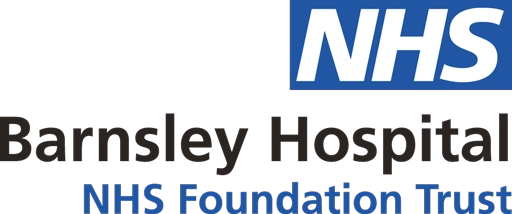Therapy Teams at Barnsley Hospital NHS Trust Go Paper-Free with System C
Therapy staff at Barnsley Hospital NHS Foundation Trust are saving time and enhancing patient care by going paper-free with CareFlow Clinical documentation and noting functionality, which is part of CareFlow’s EPR solution.
Barnsley Hospital NHS Foundation Trust is a 400-bed acute hospital in South Yorkshire that cares for around 400,000 people annually. The trust went live with System C’s CareFlow Electronic Patient Record (EPR) in August 2020 and has been rolling out the EPR's broader functionality ever since.
As part of its digital strategy, Barnsley encourages departments to go paper-free to ensure that most clinical paper documentation is digitised by March 2024.
The Therapy Services team is working with System C technology to digitise its paper forms, which is helping the trust boost staff productivity by cutting the time taken on administration and assessments across several areas of Therapy & Dietetics.
Dietetics Lead Digitisation Discussions
Trust clinical safety officer Dr Dominic Bullas began conversations with the Acute Dietetics Team Lead about capturing information digitally in early 2023. His colleague Nicola Moug, Speech & Language Therapy & Dietetic Service Manager, saw how the approach would benefit the whole of Therapy Services.
Therapy Services provides Dietetic, Speech and Language Therapy, Occupational Therapy and Physiotherapy services. Commonalities in information gathering highlighted how the team would be a good fit for going paper free.
"Our services can document similar information, so we thought it would be good to collaborate to deliver a much wider impact across all four therapies,” said Nicola. “In addition, generally we have a young, technologically-enabled workforce, and many were keen to use digital approaches that they have seen elsewhere.”
The Therapy team leveraged CareFlow’s Clinical documentation and noting functionality, an integral part of System C’s CareFlow technology. This toolset enables the creation of tailored clinical data capture workflows, fostering real-time information sharing across a patient's entire record.
The team could see that this functionality would help streamline processes, reduce duplication, and improve data collection to better evidence their impact on patient care.
Objectives of the Digital Transformation
Duplication was a significant challenge for the team. Dietetic staff, for example, would write notes to be kept on the ward and then make local notes in the office in case they had to access patient information at their desk - digitisation aimed to resolve the issue.
The therapy team identified several key objectives to improve job performance and enhance patient care through digital transformation. These objectives included:
-
Reducing duplication of history taking for the patient
-
Reducing duplication of entries – including entries for patients who are readmitted
-
Reducing recording – by using templates and pulling through critical information
-
Improving data collection, thereby evidencing the impact of care
-
Centralising records – so colleagues could see each other’s records at a glance
-
Coordinating information going out to partner agencies i.e. through discharge letters.
Engaging Staff through Technical Support and Collaboration
The Therapy Management Team saw that staff engagement was critical for successful adoption, and the team organised a comprehensive launch event in April 2023. Team members and clinical systems colleagues showed how a digital approach would make people's jobs more manageable. They addressed staff concerns, such as fears of system failures, access issues, and the need to acquire new skills.
Recognising the importance of inclusivity, the team invested time in training staff who needed to be more comfortable with technology, turning them into super users to set an example for their peers.
“We were especially keen to engage the people that weren't particularly motivated, and those who were more anxious around technology,” said Nicola. “We felt that once we could get those individuals on board, we could make them feel they’re part of something, and they could share in its success when this did happen. It enabled us to send a positive message to other staff who didn’t feel very digitally enabled.”
Co-Creation Realises the Benefits of Digitisation
Taking a phased approach, the team worked with staff to co-create a new digitally-driven strategy. The first phase saw staff map out all paper documents for assessments and referrals, identifying common information used across the four therapy areas.
Rather than merely replicating existing paper forms digitally, the team looked to think holistically about how it captured, managed, and shared information.
The team trialled new digital processes and forms using test data, which allowed staff to look differently at how they could capture information. They designed layouts with dropdowns and checkboxes to simplify data entry and save time.
"Some of our assessments can be quite interactive," said Nicola, "with images drawn on various body charts. It took a lot of work to transfer this information into a pro forma, and our more digitally enabled staff were great in helping show their colleagues how it would work in practice.”
Staff also worked together to address specific challenges. For example, the medical records and clinical systems teams helped to digitally scan patient records for paediatric diabetes staff so that information about youngsters with the condition was available electronically and in a timely manner.
The team also set up online communication channels using Microsoft Teams to encourage staff to share experiences and discuss processes, which has helped to foster a collaborative environment.
Positive Impacts for Patients and Professionals
Staff are reporting excellent results from this digital transformation initiative, which is currently fully in operation for Dietetics and Speech and Language Therapy. Physio and OT colleagues are also increasingly digitising documentation as the trust continues to work through its implementation plan.
Productivity improvements are clear. Staff survey results revealed that colleagues feel going paper-free has saved time, with reports that the time taken to complete an assessment form has gone from 20 to five minutes. Therapy staff and the broader care team say they have easier access to information, and now they use tools that can have a positive impact on patient care.
In addition, the Paediatric Diabetes Dieticians save approximately six hours of administrative time every week by not having to write up clinic notes following their weekly MDT meeting. Oncology Dietitians are also saving approximately 20 minutes per individual new patient assessment.
In Speech & Language Therapy, case history taking now takes approximately five to 10 minutes to document. Previously when on paper it would typically take more than 15 minutes due to difficulty locating physical notes, deciphering handwriting, and writing this information. The digital proforma has reduced by half the time spent documenting patient assessments and reviews. For non-complex patients this has reduced the time taken from 20 minutes-plus to around 10 minutes.
Physio staff find it easier to record, access and interrogate notes, as they no longer need to write down information within the restricted space of a ward. Neither do they feel rushed to complete notes to share with other members of the MDT.
Going Beyond Productivity Benefits
This digital transformation also supports positive patient outcomes with useful alerts and easier access to patient information at the point of care.
“Having demographics in one place is hugely useful, and the alerts on the digital system are fantastic,” said Nicola. “It tells you if a patient has an allergy, if there's a safeguarding issue or if someone has dementia. It's helpful because you can look at it quickly and easily before seeing your patients.”
Making documentation available digitally in one place reduces the risks of information governance issues or lost and misplaced notes, especially if it is a shared caseload. Staff find it easier to add links to additional information, such as NICE guidance or results held on other internal systems.
Digital transformation also contributes a considerable amount to the environmental ambitions of the trust by massively reducing the amount of paper used. The technology also increases the opportunities for patients to receive information digitally.
Challenges remain in some areas. For example, multidisciplinary documentation includes data from multiple sources, and how best to integrate these needs consideration when creating a single digital form. The trust will be able to address such issues as more pathways become digitised.
Overall, staff feel hugely positive about digitisation, and a celebration event in the summer showcased its success. To continue in this spirit and broaden its impact, digital champions and the wider team share updates across the trust through internal communications, inductions for new junior doctors, and on social media.
Conclusion
The journey of the Therapy Services team at Barnsley toward becoming paper-free exemplifies a successful digital transformation in healthcare. By leveraging CareFlow's Clinical documentation and noting functionality, engaging staff with various digital skills, and fostering collaboration across the trust, the team has achieved positive outcomes, including time savings, reduced duplication, and enhanced patient care for current and future needs.
“We’ve learned so much on this journey,” said Nicola. “The main thing is that everyone has worked together on this project. We are looking forward to the wider rollout and seeing more benefits of going paper-free."
If you'd like to learn more, we highly recommend taking a look at our Electronic Patient Record. If you need any assistance please contact us right away. Our friendly members of staff are always happy to hear from you.


